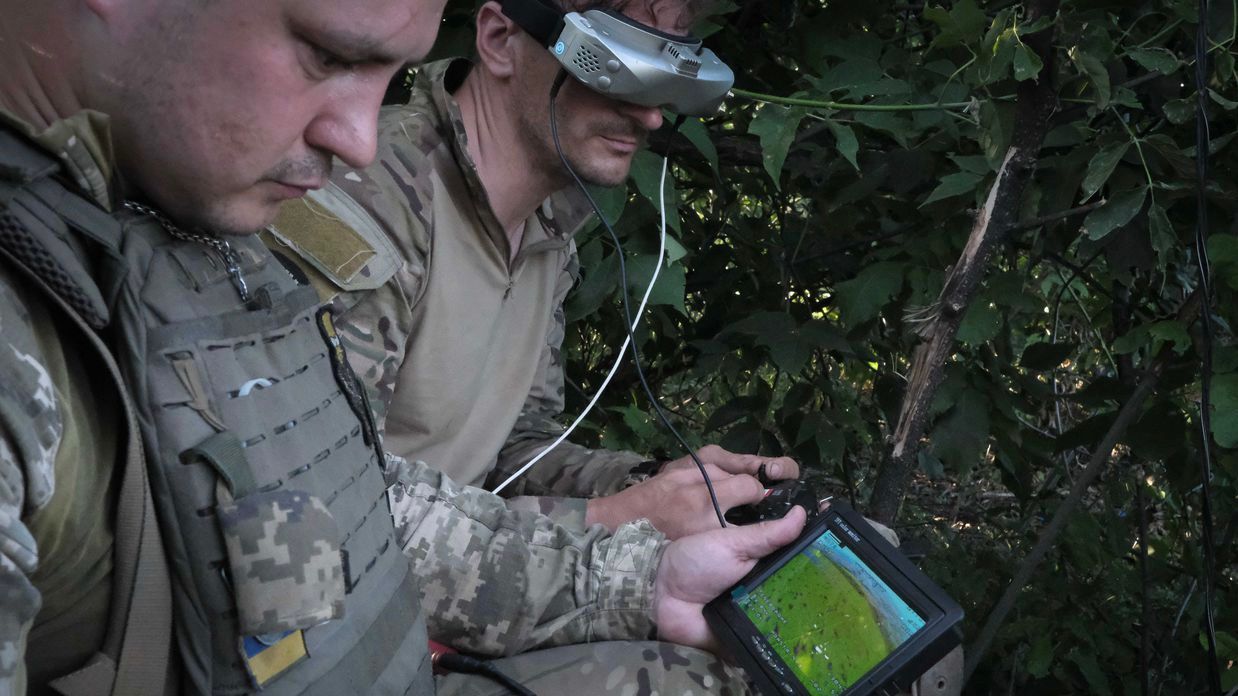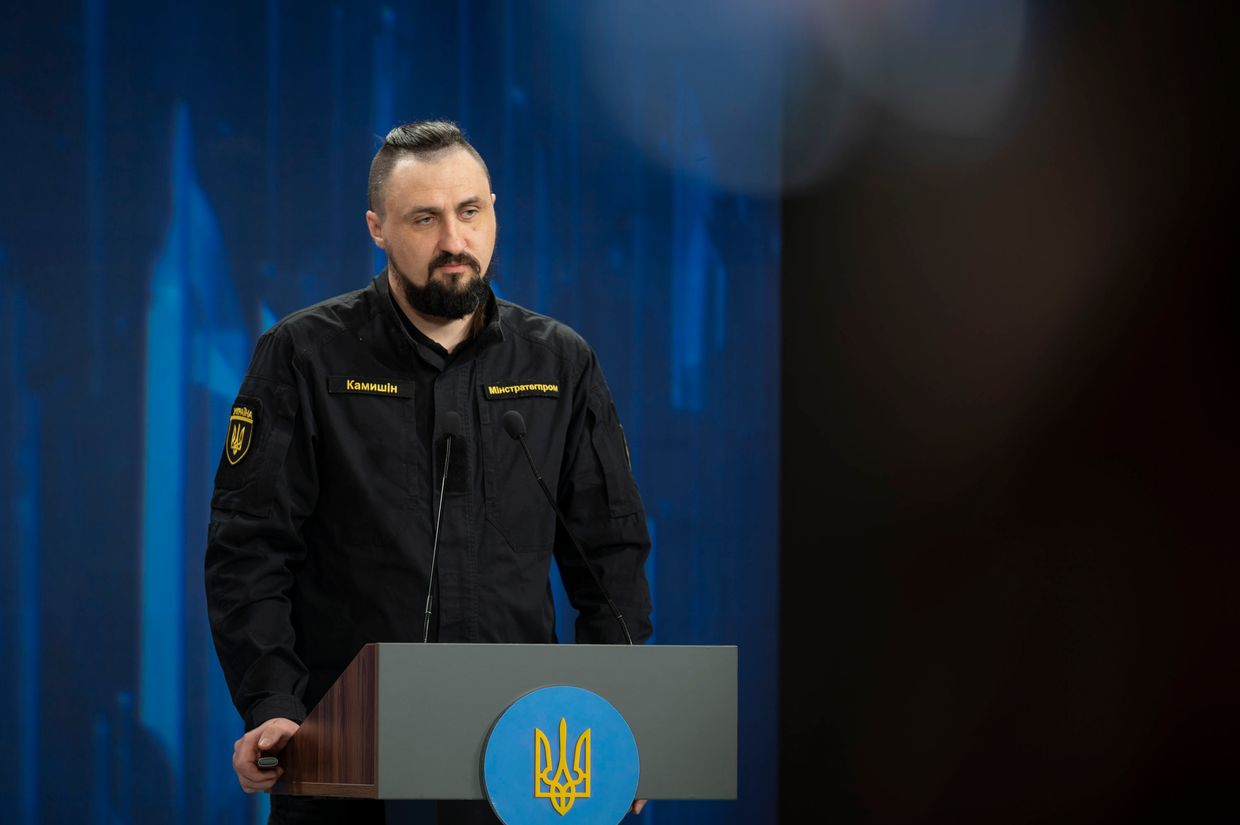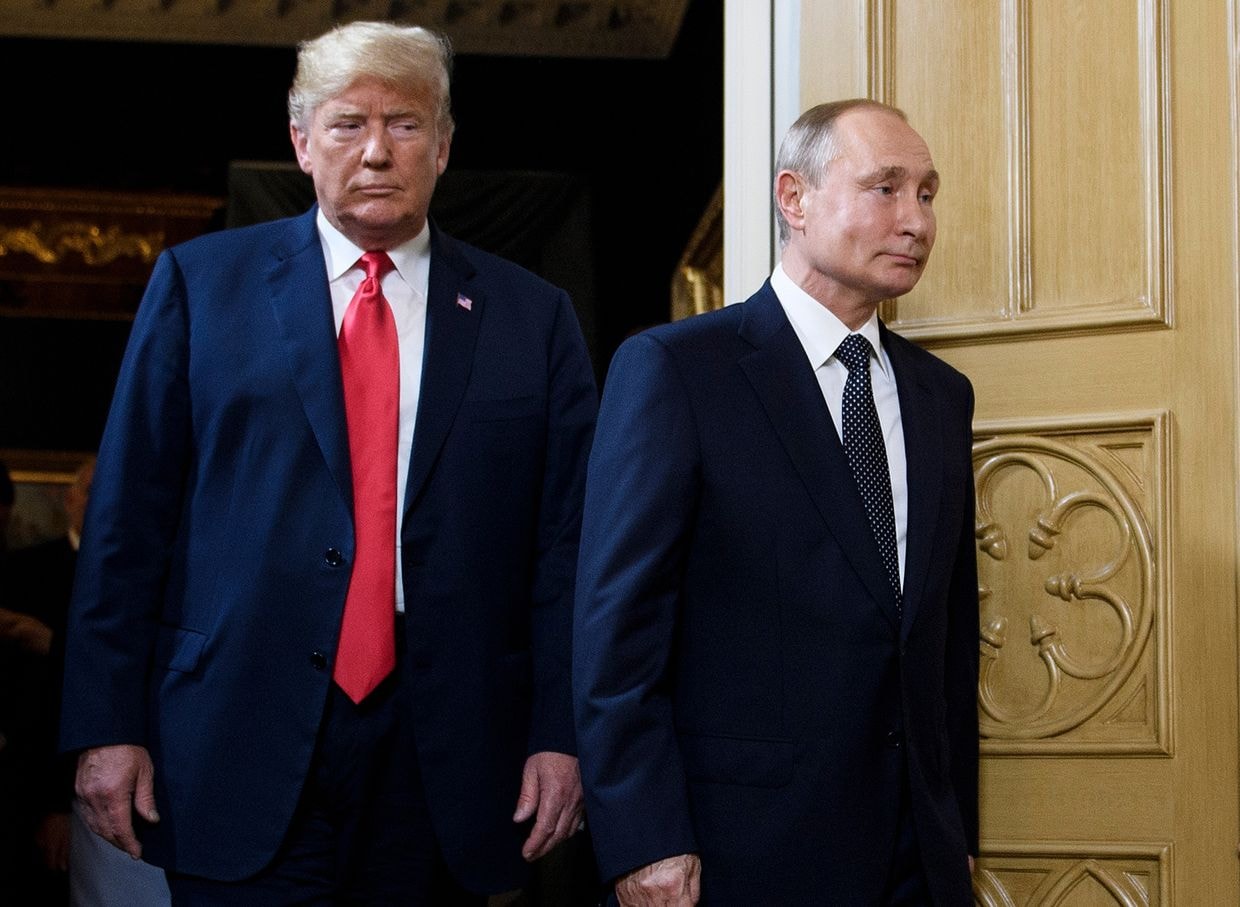
Ukraine’s drone companies face ‘death, migration, or global acquisition’ amid defense spending squeeze
As Ukraine’s defense production capacity outpaces its funding, drone companies are eying opportunities abroad.
An operator carries a Ukrainian-made Punisher drone during a test on August 11, 2023. (Sergei Supinsky /AFP via Getty Images)
A surge of domestic drone companies in Ukraine has outpaced what the government budget can support, leading many companies to increasingly seek international partnerships or face consolidation.
Drones have become a transformative part of Ukraine’s military strategy. The country’s ability to mass produce these cheap and effective weapons has led to the creation of more than 200 domestic drone companies, but experts in Ukraine’s drone industry agree that factors including increased competition mean many of the smaller firms are unlikely to survive.
While there are strategic incentives for large, decentralized drone production, an economic reality underpins the situation: the Ukrainian government cannot afford to financially support the industry’s full production capacity.
Additionally, Ukraine restricts exports of goods that can serve a military purpose, including drones, which means that Ukrainian companies can’t access international markets to cover this gap.

“While waiting for contracts, we are burning through our working capital,” said Ukrainian tech investor and AeroDrone partner Dmytro Shymkiv.
AeroDrone, founded in 2018 as an agricultural drone company, has developed two higher-payload drones approved for military use by the Defense Ministry and received a government contract in March. Smaller companies will not be so lucky, Shymkiv said.
“First, we will see the death of small companies, because the government cannot contract them,” Shymkiv predicts. “Second, we will see acquisitions or movement of Ukrainian companies internationally. And third, there will be consolidation in the Ukrainian market.”
Of more than 200, only 58 domestic drone companies had secured government contracts, Ukraine’s Defense Ministry said in February.
A 10-billion-dollar shortfall
Overall, Ukraine’s defense industry is capable of producing $20 billion worth of defense products in 2024, but Ukraine can only fund half that amount, according to Minister of Strategic Industries Alexander Kamyshin. About $6 billion has already been funded, while the government expects to find funding sources for another $4 billion by the end of the year.
Funding within Ukraine comes from multiple channels including the Defense Ministry, Digital Transformation Ministry, local authorities, individual brigades, NGOs, and the National Guard.
Around one-third of the $6 billion under contract is dedicated to drone production, Kamyshin told the Kyiv Independent in an interview, with the rest funding other defense needs such as ammunition.
The $10 billion Ukraine can’t afford, Kamyshin hopes to raise by the end of the year through Ukraine’s new Zbroyari initiative, which encourages foreign partners to directly fund Ukraine’s domestic defense industry.
The goal is “almost impossible, but I have to set the bar high enough,” Kamyshin said.
So far, Denmark and Canada have contributed $28.5 million and $2.1 million, respectively. A significant portion of the $2 billion in financing announced by the U.S. Secretary of State Anthony Blinken during his visit to Kyiv last week will also fund Ukrainian firms, though the exact figure was not announced.

Additional agreements are under discussion with multiple countries, Kamyshin said, declining to provide details until they are finalized.
Kamyshin has also expressed a desire to use funds for domestic defense industries from seized Russian assets, as well as the European Union’s European Peace Facility, a fund which reimburses its members for aid sent to Ukraine.
The current inability to fund the total production capacity is a stark contrast with the beginning of the war, when the few existing domestic firms had limited capacity, Kamyshin notes. Then, Ukrainian forces fought primarily using old Soviet stocks and weapons donated from Western partners.
When he took his job in March 2023, “every single morning, I was waking up and thinking about how to produce more,” Kamyshin said. Now, the industry’s rapid development means he spends half his day thinking about increasing production, and half thinking about how to fund it, he said.
A revolution in warfare tactics
In Ukraine, drones are such a vital part of the battlefield strategy that Ukraine is creating a new military branch dedicated to their use and production. The unmanned systems include naval, aerial, and land drones.
Drones have shown themselves to be a staple of 21st-century warfare, a paradigm shift that many countries’ defense industries are only recently focusing their attention towards. NATO and Western countries are closely watching how drones are revolutionizing combat operations as they begin adapting their own militaries to similar types of warfare.
In Ukraine, not only is there experience building drones, but a vast and valuable amount of knowledge deploying them and learning how they perform in combat environments.

Both Russia and Ukraine are rapidly innovating in response to each others’ new weapons and tactics. Models range from the cheapest forms, used for basic short-range reconnaissance missions, to long-range drones carrying heavy payloads for strikes deep inside each others’ territory.
Their low “cost per kill” – drones costing as little as a few hundred dollars have destroyed equipment worth millions – have helped Ukraine as it struggles with a shortage of personnel, artillery, and other long range weapons systems. Still, drones alone are not enough to capture territory or overcome a 10:1 disadvantage in artillery.
‘We need to go outside of Ukraine’
Domestic pressure in the drone market is adding to a larger shift toward European defense cooperation, as companies look for partners outside of Ukraine to open new revenue streams – as well as move their equipment outside the range of Russian missiles. International investors and Ukrainian drone executives told the Kyiv Independent that there is mutual interest for partnerships.
For Ukrainian drone companies, moving production outside of Ukraine allows companies to bypass stiff export limits and access the global market. It also attracts private investors who would otherwise hesitate to invest in known military targets.
“We understood more than a year ago that we need to go outside of Ukraine,” said Maksym Muzyka, who served until late last year as the CEO of Ukraine’s UA Dynamics, producer of the Punisher drone.
“It's difficult to build large manufacturing capacity inside Ukraine if it can just be destroyed by one strike.”
Additionally, companies need more customers to cover research and development costs to innovate as battlefield conditions change, Muzyka said.
Partnerships to produce certain components abroad are far more common, but at least one company has moved production of an entire drone abroad. Last year, the Ukrainian-Czech company UAC announced it was manufacturing a reconnaissance drone in Czechia, the Leleka LR. The drone is a longer-range model of a Ukrainian drone produced by DeViro. The company is focused on the Ukrainian military’s needs, but also expects to supply several hundred units to NATO countries, it said late last year.

Czechia, a key ally to Ukraine since the first day of the full-scale invasion, has worked closely with the Ukrainian government to remove red tape from defense cooperation, said Martin Lukac, a defense diplomat in the Czech Embassy in Ukraine.
“It’s a big opportunity for us as well, because Ukraine has experience in this area, they have know-how,” Lukac said. “The short term goal for Czechia is to help Ukraine, for general European and Ukrainian protection, as well as to learn and improve our own industries.”
There are mutual benefits in the long term, he added. A more robust industry helps Ukraine’s economic growth, while closer partnerships and ties, and the existence of better weapons – whether produced in Czechia or available for purchase – also provides longer-term security benefits.
Recently, more countries have expressed interest in learning from or replicating Czechia’s experiences, Lukac said, including establishing joint ventures.
Ukraine also has an opportunity to help Western countries address one of their biggest weaknesses in the global drone arms race: The international commercial drone market is currently dominated by the Chinese company DJI, which the U.S. has called a national security threat.
Exporting drones is all but impossible
But the funding shortfall won’t be resolved overnight, and moving production abroad is not often feasible. In the shorter-term, drone companies have asked the government to lift export limits.
“We manufacture a lot of drones in Ukraine. And, indeed, not all of them can be used in the army,” said Kateryna Mykhalko, the executive director of Tech Force in UA, an industry association of more than two dozen defense production companies. “Export is one way to ensure that companies do not go bankrupt, develop their R&D, and perhaps in the future the military will need their products.”
Some companies were exporting drones before the full-scale invasion, Mykhalko said, and demand has only grown.
Currently, any export of goods that could be used for a military purpose requires permission from the State Export Service of Ukraine, which works with other government agencies to determine waiver eligibility. In practice, drone executives say, even when the government cannot offer contracts, these waivers are all but impossible to obtain for their products.
Another request from the industry association is longer-term and more standardized government contracts, which are difficult for Ukraine to commit to due to unpredictability at the frontlines and in international funding.
Allowing exports would alleviate some of the long-term uncertainty, said Mykhalko.
But these exports are politically sensitive. Sources among drone manufacturers and Ukraine’s government provided various explanations for the effective ban. Some suggested that exporting drones could dissuade foreign partners from sending additional weapons to Kyiv. Others worried that Russia could buy Ukrainian drones from third parties – or simply pick up a downed drone on the battlefield – and claim for propaganda purposes that it was fighting Ukraine with its own weapons.
In response to questions about the effective ban on defense exports, the State Export Service of Ukraine said in a statement that there is no across-the-board ban, and the decision to grant export permits is made on a case-by-case basis with other state authorities in accordance with legal procedures. It prioritizes meeting the needs of Ukraine’s defense forces, preventing goods from entering countries under sanction, including Russia, and complying with all international laws.
Consolidation is ‘as inevitable as gravity’
Everyone the Kyiv Independent spoke with agreed that some future consolidation is inescapable, and some indicated that investment funds have already expressed interest in backing drone industry consolidation.
Even lifting exports and encouraging international partnerships couldn’t fully stop consolidation, said James Acuna, a former senior CIA officer who does consultancy for investors in drone and AI technology.
“War necessity does not equal commercial viability in the future. Nor should it,” Acuna said.
Of dozens of companies he’s seen in Ukraine, he said he has recommended only a small handful to international investors.
In particular, mass-produced cheaper systems will struggle in international markets, he said, against competitors like DJI, which has billions of dollars of research and development backing their drones.

Ukraine’s drone industry is similar to the United States automotive industry in the early 1900s, said Isaac Flanagan, co-founder of Zero Line, a nonprofit research and development organization focused on Ukraine’s frontline. At first, hundreds of car companies entered a newly-born market. Within a few decades, a handful dominated the competition.
But consolidation could open opportunities for companies to specialize and innovate on specific parts, the way the automotive industry has: “Ford and GM, they don’t make their own airbags,” Flanagan notes. Something similar could work with drone components like flight controllers or rotors, he said.
Even if consolidation is “as inevitable as gravity,” said Flanagan, “consolidation that results in higher volumes or better products is very much a good thing.”












